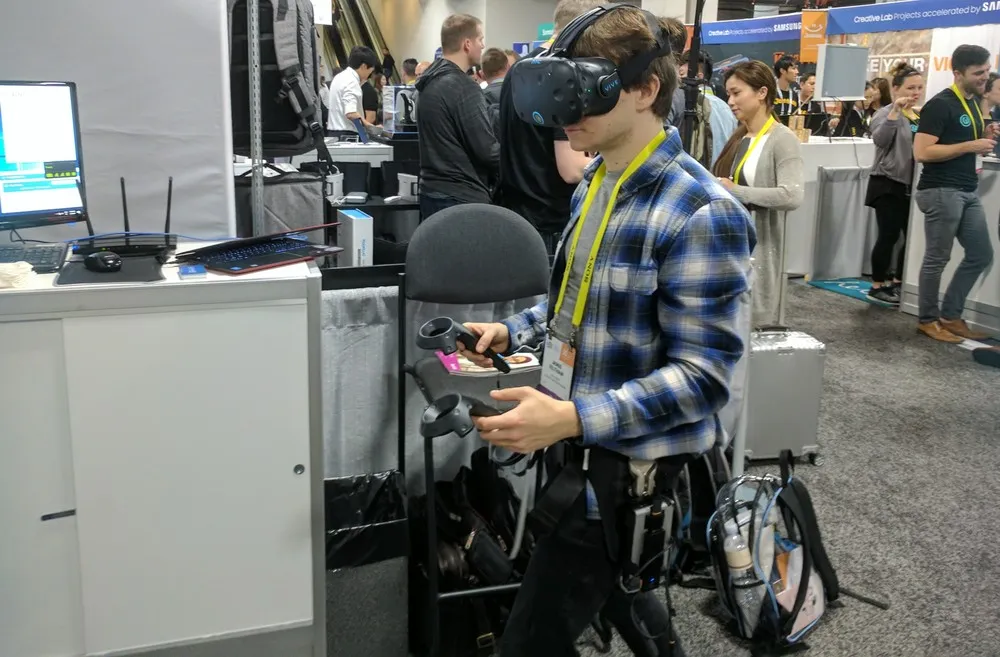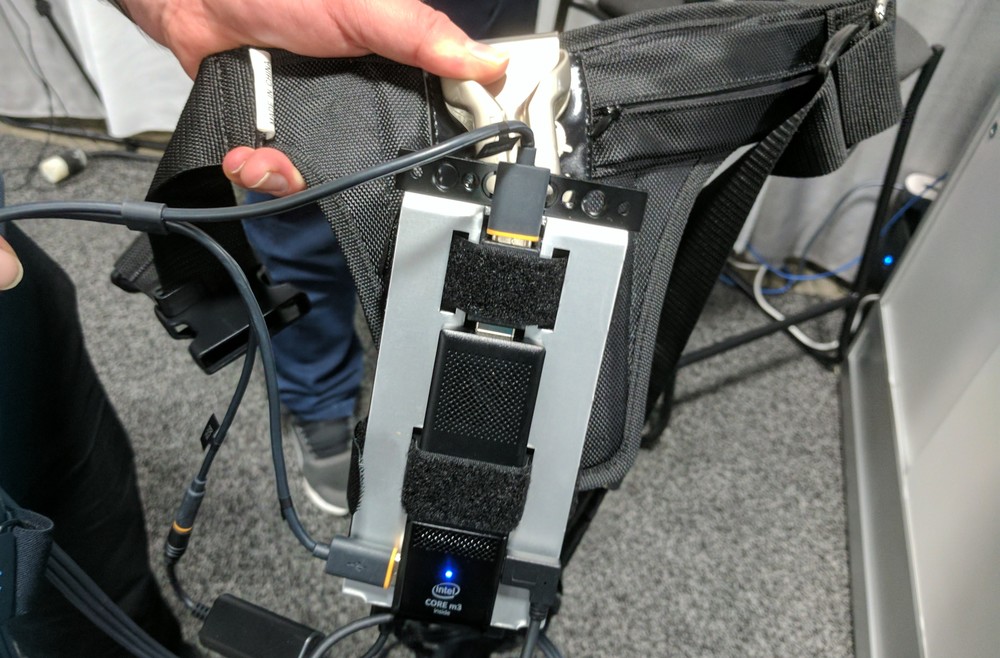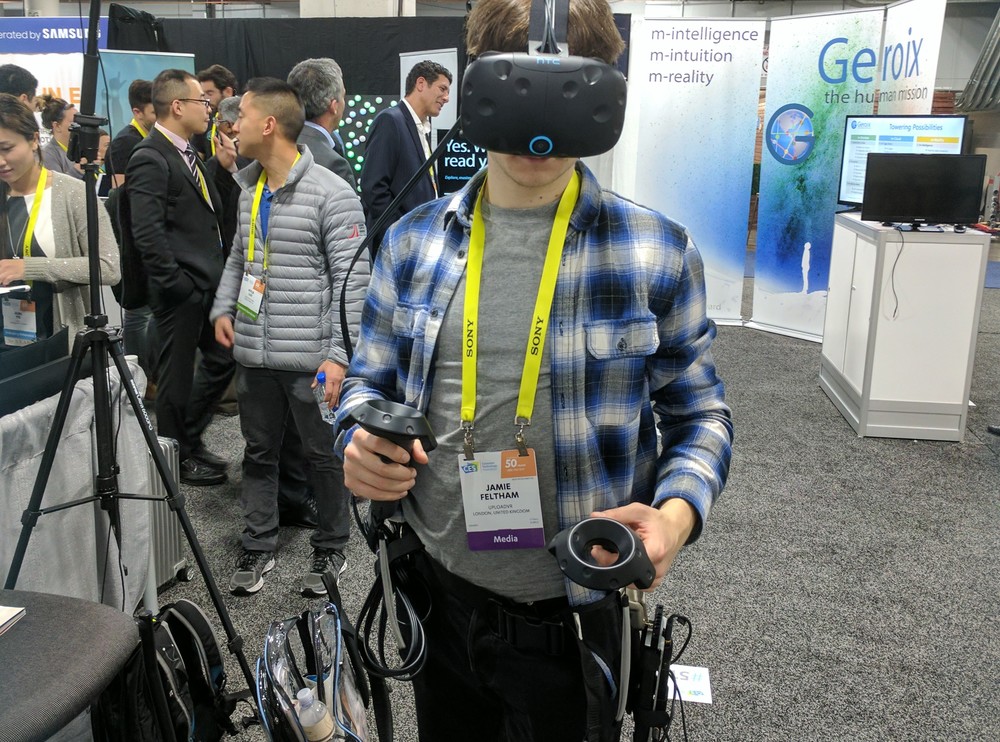KwikVR, a wireless add-on kit for the Oculus Rift and HTC Vive, is going to beat TPCAST’s solution to market, but, if you’re desperate for untethered VR, you might want to hold on for the latter’s launch instead of jumping the gun early.
Scalable Graphics, the cloud solutions company behind KwikVR, told me at CES this week that it was aiming to release the product in March for €300, or around $300. A hands-on demo was available on the Vive, though I was told that the PC in use was experiencing overheating issues which might impact the framerate.
I wore the kit like a belt, with the device hanging from my left hip and the Vive’s wires bundled up to avoid them dragging on the floor. I was using a near-final prototype of the device that didn’t boast the sleek design seen on its website, but would apparently offer an experience identical to it.
If that’s the case then the final version of KwikVR isn’t something I’d recommend to hardcore VR users. At first the system seemed to work well. I was using Google’s Tilt Brush and rapidly moving from one side of the tracked area to the other, twisting my body to test the latency and whirling the motion controllers around my head. In the first few minutes I didn’t notice any difference between this kit and using the Vive when tethered, but as I got used to the system I began to spot the ever so slight moment in which the screen would have to catch up with where I’m looking.
Scalable says KwikVR offers under 12 milliseconds of latency on top of the delay already on the Vive, which won’t be decreased for the final release. That might sound like a tiny amount of time, but it’s just enough to notice the screen lagging behind you as you finish a head movement. Once you realize it’s there, it quickly becomes agitating, though not necessarily destructive. The TPCAST solution for Vive claims less than 2 milliseconds, by comparison.
In short play sessions you might find the trade-off to be worthwhile; playing in room-scale without a wire tugging at the back of your head is liberating, but for extended use I could see it becoming irritating. At one point the screen also became completely distorted and didn’t clear up for a few seconds, and after prolonged play the framerate started to slow, though Scalable Graphics said this was to do with the overheating PC.
I’m also concerned about the products compatibility with the Oculus Rift. Sacalable told me that its tech definitely worked with the Rift DK2, but it was still working on support for the consumer version of the device. KwikVR hasn’t been seen running on Rift yet, and with the product set to launch in two months I would have thought that support would have been finalized, especially seeing as it’s promised on the product’s website.
After initial skepticism, we were impressed with TPCAST’s wireless solution for the Vive, but KwikVR shows why we were concerned in the first place. Cutting the cord on your VR headset just isn’t worth it when it comes at the cost of added latency that’s noticeable. If you’re desperate to make your Vive wireless then keep waiting for the TPCAST kit. Rift owners, meanwhile, should look for a better solution.




























